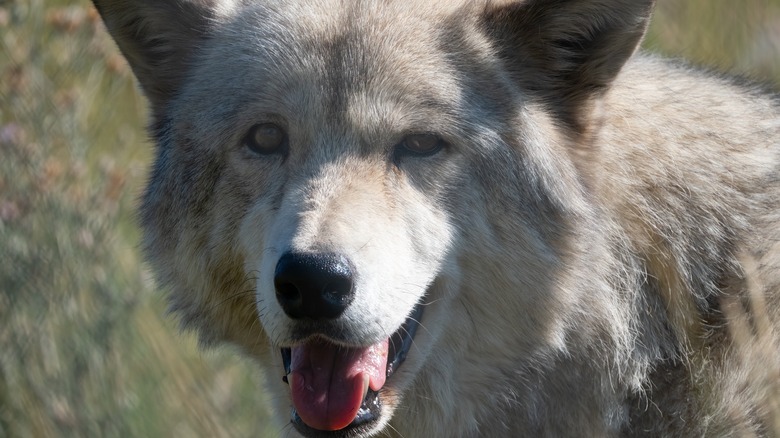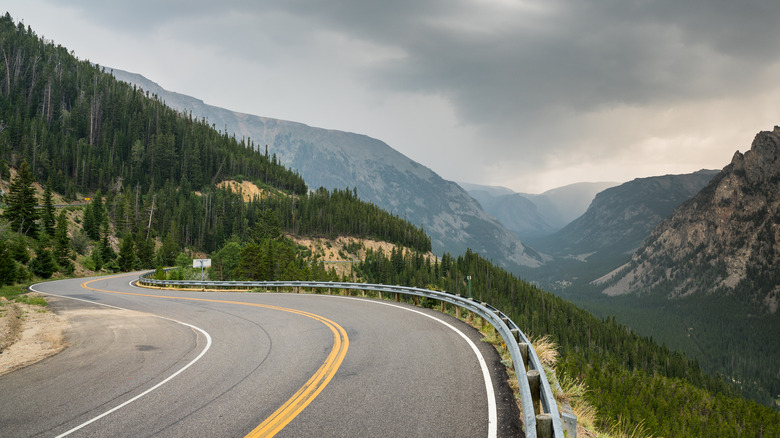Yellowstone National Park is among the most popular American national parks and was the first established in the United States. Not only does it have rare geologic formations like geysers, but it is also one of the best national parks for wildlife. From bears to bison to birds, everyone visiting hopes to catch a glimpse of the area’s iconic species. There are multiple efforts to preserve the wildlife within the park, including federal protections from the Endangered Species Act. Near the park is another organization hoping to better the lives of local animals.
Northeast of the park you’ll find the Yellowstone Wildlife Sanctuary in Red Lodge, Montana. The animals who call this place home can’t survive in the wild, often due to injuries or too many human encounters. Given that all of these animals are native to the northern U.S., they are comfortable in chilly weather. While the sanctuary is open to the public in the spring and summer, autumn is the best time to visit this life-saving facility. Planning your visit in the morning, around 10:00 a.m. when the park opens, means you’ll get to see the animals when they’re most active.
See dozens of species of wildlife at the Yellowstone Wildlife Sanctuary

The Yellowstone Wildlife Sanctuary has black bears, bobcats, cranes, owls, ravens, wolves, coyotes, and many more endemic animals. These species live in Yellowstone National Park, but you might not get a chance to see them all as they are wild and sometimes elusive. Most of the animals at the sanctuary become more active in cooler weather, especially if it snows. November through December brings out fun behaviors for visitors to observe at the sanctuary, as the animals don’t need to sleep in the shade throughout the day to stay cool. Tours are available year-round, but from January through March, the facility is only open for private tours.
Public guided tours start at $45 if you’re visiting alone, with an additional $12 per person if you go as a group. The aforementioned private tours start at $105 with the same $12 add-on per additional guest. Both options can accommodate groups of up to 10 people. Either tour will help you get to know each animal as guides reveal their unique and often heartwarming stories about how the Yellowstone Wildlife Sanctuary became their new home. In hearing these stories, you will learn about the issue of human-wildlife contact and how the staff cares for them. Guides will also delve into each species’ role in the greater Yellowstone ecosystem. Admission is limited and days of operation change with the seasons, so it is best to book tickets online.
Enjoy the scenery as you drive to Yellowstone National Sanctuary

While you can opt for just a tour of the Yellowstone Wildlife Sanctuary, you can add an animal encounter to your itinerary as well. With the help of the sanctuary’s Education and Animal Care team, this option allows you to meet one of the sanctuary’s resident tiger salamanders. These amphibians are native to multiple regions of the United States and are the largest land-dwelling salamanders on Earth. A public tour plus this animal encounter is $80 for one guest and $12 for each additional person in your group.
Traveling between the sanctuary and Yellowstone National Park is convenient as Highway 212 connects Red Lodge to the northeast entrance of the park. Enjoy incredible landscape views in Big Sky Country on this road trip route. Commonly known as Beartooth Highway, this is one of the National Scenic Byway’s “All-American Roads,” featuring scenic overlooks within the Custer Gallatin National Forest.

